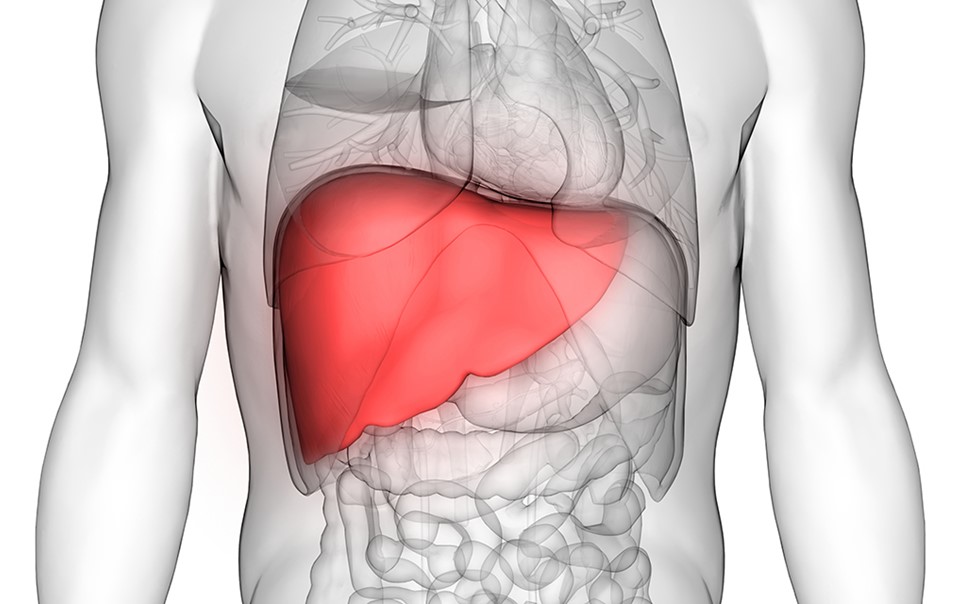 Liver Fibrosis and Cirrhosis
Liver Fibrosis and Cirrhosis
What are liver fibrosis and cirrhosis?
Fibrosis and cirrhosis are terms for scarring in the liver as a result of chronic (long term) disease processes affecting the liver. Fibrosis describes any degree of scarring in the liver, while cirrhosis is reserved for the most severe and extensive pattern of scarring when the chance of complications of liver disease is higher.

Why does it occur?
The liver has a tremendous ability to recover from injury and is constantly repairing and remodelling itself. However, if the damage to the liver is ongoing, the ability of the liver to remodel the scar tissue is overwhelmed and the fibrosis starts to accumulate. Over time, the fibrosis becomes thicker and more extensive, while the liver cells proliferate in pockets, called nodules: this is cirrhosis. Causes of chronic liver disease that can lead to cirrhosis include:
- Non-alcoholic fatty liver disease (NAFLD)
- Alcohol related liver disease
- Chronic hepatitis viruses (Hepatitis B and C)
- Autoimmune liver diseases
- Biliary diseases such as PBC and PSC
- Haemochromatosis
How can I find out if I have fibrosis or cirrhosis?
In the vast majority of cases, fibrosis develops without any symptoms. Liver damage is often picked up incidentally at the time of other investigations. It is important to look for signs of liver damage in people with risk factors for chronic liver diseases rather than to wait for it to become apparent, by which time it may be too late to reverse. You can pick up signs of liver injury through abnormal liver blood tests although, confusingly, cirrhosis can be present when the liver blood tests are normal. Non-invasive tests, such as FibroScan® can be used in people with risk factors for liver disease and can be very effective to rule out significant liver fibrosis or cirrhosis. A diagnosis of cirrhosis is made with a combination of:
- Clinical risk factors, symptoms and signs
- Blood test results
- Imaging results
- FibroScan®
- Liver biopsy in some cases
What does cirrhosis mean for me?
The term cirrhosis conjures up images of severely ill patients and, indeed, many of those who die of liver disease have cirrhosis. Conversely, however, as people often feel perfectly normal for many years with cirrhosis, without even knowing they have it. Cirrhosis can be divided into compensated cirrhosis, where the liver is able to continue working more or less normally, and decompensated cirrhosis, where the liver is failing. Features of decompensated cirrhosis include:
- Ascites (free fluid in the abdomen, often causing it be become distended)
- Hepatic encephalopathy (problems with brain function related to the accumulation of toxins)
- Bleeding (often from swollen blood vessels in the oesophagus and/or stomach, called varices)
Additionally, jaundice (yellow discolouration of the skin and eyes) and development of liver cancer (hepatocellular carcinoma) are seen as complications of cirrhosis. Patients with decompensated cirrhosis are at increased risk of developing infections, including in the ascitic fluid, known as spontaneous bacterial peritonitis.
How is cirrhosis managed?
The management of cirrhosis centres on:
- Treating the underlying cause
- Monitoring for the development of complications/decompensation
- Early treatment of any ensuing complications
In practice, this often means:
- Regular review in clinic and blood tests (at least 6 monthly)
- Six-monthly ultrasound scans to screen for liver cancer
- Annual FibroScan® to check liver stiffness which, with blood tests, can help determine the risk of having significant varices
- Endoscopy (OGD) to look for varices in selected cases
Is cirrhosis reversible?
Traditionally, it was thought that cirrhosis was irreversible and in practice, most cases are. However, if the cause of the liver disease can be removed completely, the liver can remodel and cirrhosis can regress, although it can take many years for this to happen. Importantly, however, if someone has decompensated cirrhosis, removing the cause of the liver disease can allow the liver function to recover sufficiently that the liver becomes compensated again, which has enormous health benefits.
